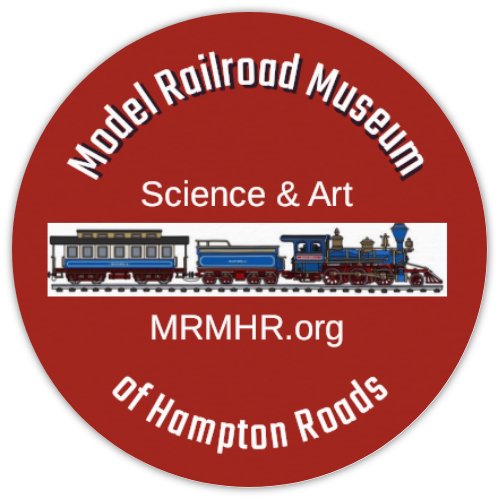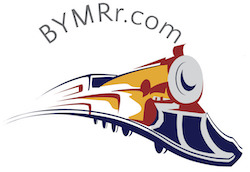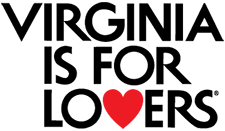Making Tracks
April 2024
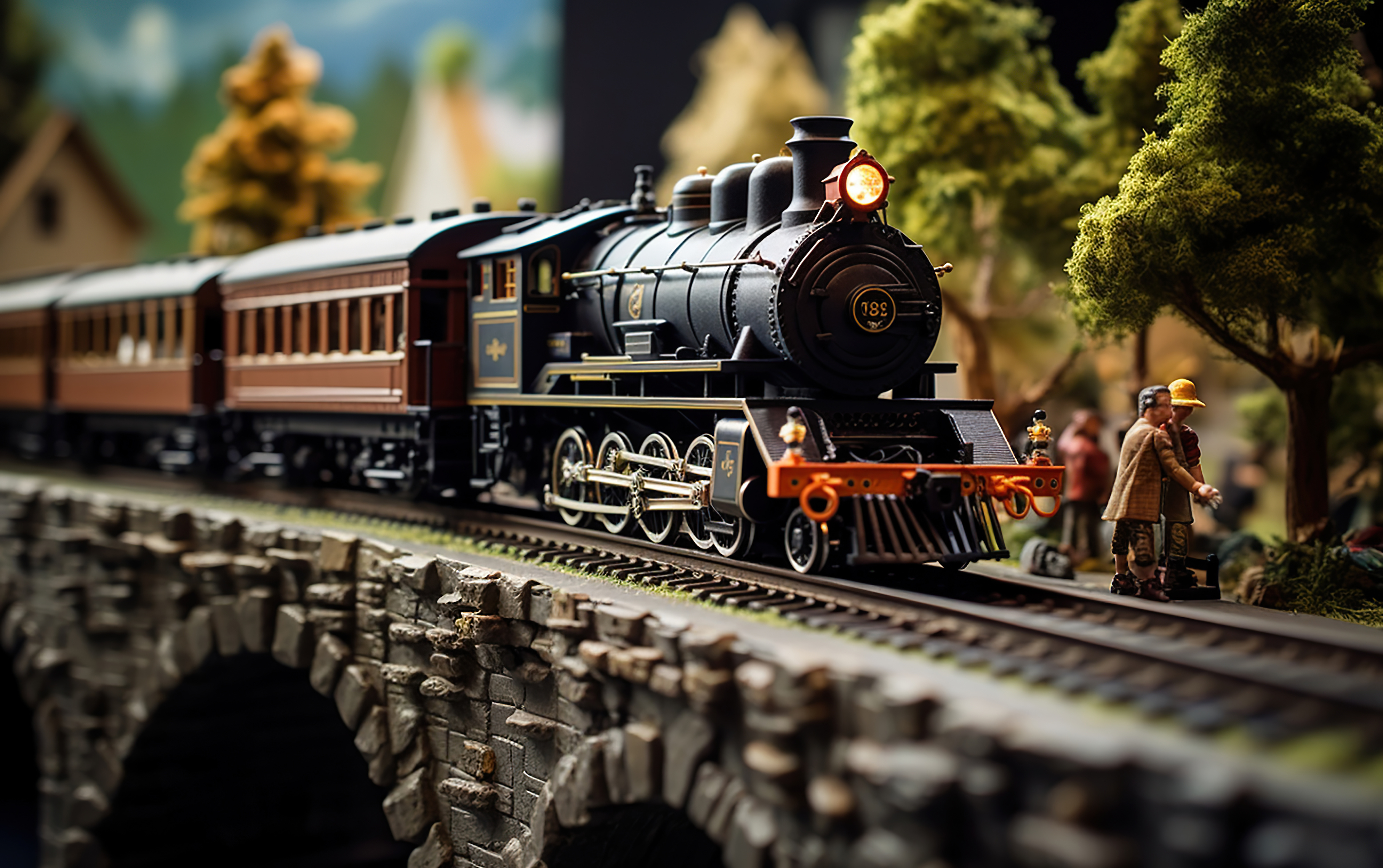
Model Railroad Museum of Hampton Roads
- A Model Railroader's Dream
By Greg Warth
How many
of us have had a dream of building a model railroad? Some of us have actually
accomplished it within their own homes or clubs. I’ve always loved trains since
I was six years old and got that first American Flyer around the Christmas
tree. And as I was growing up, I would occasionally get to see a real layout
built by one of my friend’s fathers. I loved seeing that and I always knew I
wanted to build one for myself. I finally started the process in 1990 and after
the 5th generation of layouts built and torn down, at age 76, I now
have a small semblance of my original dream, in N scale, in a small room
partitioned off the attic. It’s not perfect but I enjoy it.
The fun of
doing that has never resolved, and even now, I am building new and smaller
layouts, just because it’s…well, fun. And I want to share that enjoyment with
others. And now, over the past 3 years, several of my model railroad companions
and I have invested a huge amount of time and energy into a new dream. This new
dream is to create great layouts for others to see and enjoy and operate –
something special and spectacular - something people will be excited to see and
continue to visit over and over again. We are driven to accomplish this, just
for the love of the hobby, if for no other reason, and to see the fun and
excitement in others’ eyes, young and old alike, when they see it.
We knew
this wouldn’t be easy, but when you’re driven by a dream, you just keep at it
‘till you get it. Quitting is not an option. So, we have the desire, we have
the knowhow, we have the plans, we have the nonprofit organization, and we have
found several possible locations. So, what’s the problem?
None of us
in our group has the personal financial resources that it would take to
accomplish this. We are all donating what we can on a monthly basis to help
grow the Museum’s bank account, but it’s slow going. We need a benefactor, but
the two philanthropists that I’ve talked to want to see a facility, a building,
where this would be accomplished, a place where the dream can be visualized.
Plus, they want to see that we have some “skin in the game” so to speak.
One
suggestion is to request some support from all the model railroaders in the
area who would like to see this Museum develop. If all of us could provide a
pledge of a certain amount per month of what we can afford, this would go a
long way to help decide what kind of facility we could lease. We would like to
get something at least as big as the space we had at Fairfield ~ around 4000
sq.ft. just to get started. This would just be a pledge, not an actual payment
yet. That would come later when we get a place. We just need to know how many
would be willing to do this. We will also ask the public to contribute pledges
as well. And we are continuing our quest for grants from major model railroad
sellers and manufacturers.
Please
note that this suggestion has nothing to do with membership in the NMRA, the
MER, or the Tidewater Division. It is a total separate entity that requires
support from you as an individual model railroader. A few have already stepped
up to the plate and for that we are greatly appreciative.
We will
get there eventually. As mentioned, quitting is not an option. We are dedicated
to this project and will see it to its completion. Our dream is to one day see
those doors open to those who love trains, models, and railroad history.
We hope that is your dream as well.
If you
wish to make a pledge, please let us know by sending an email to
treasurer@mrmhr.org, or go to this page. Thank you.
Birth of Virginia Beach
Part 9 in a Series by Warren Leister, Historian
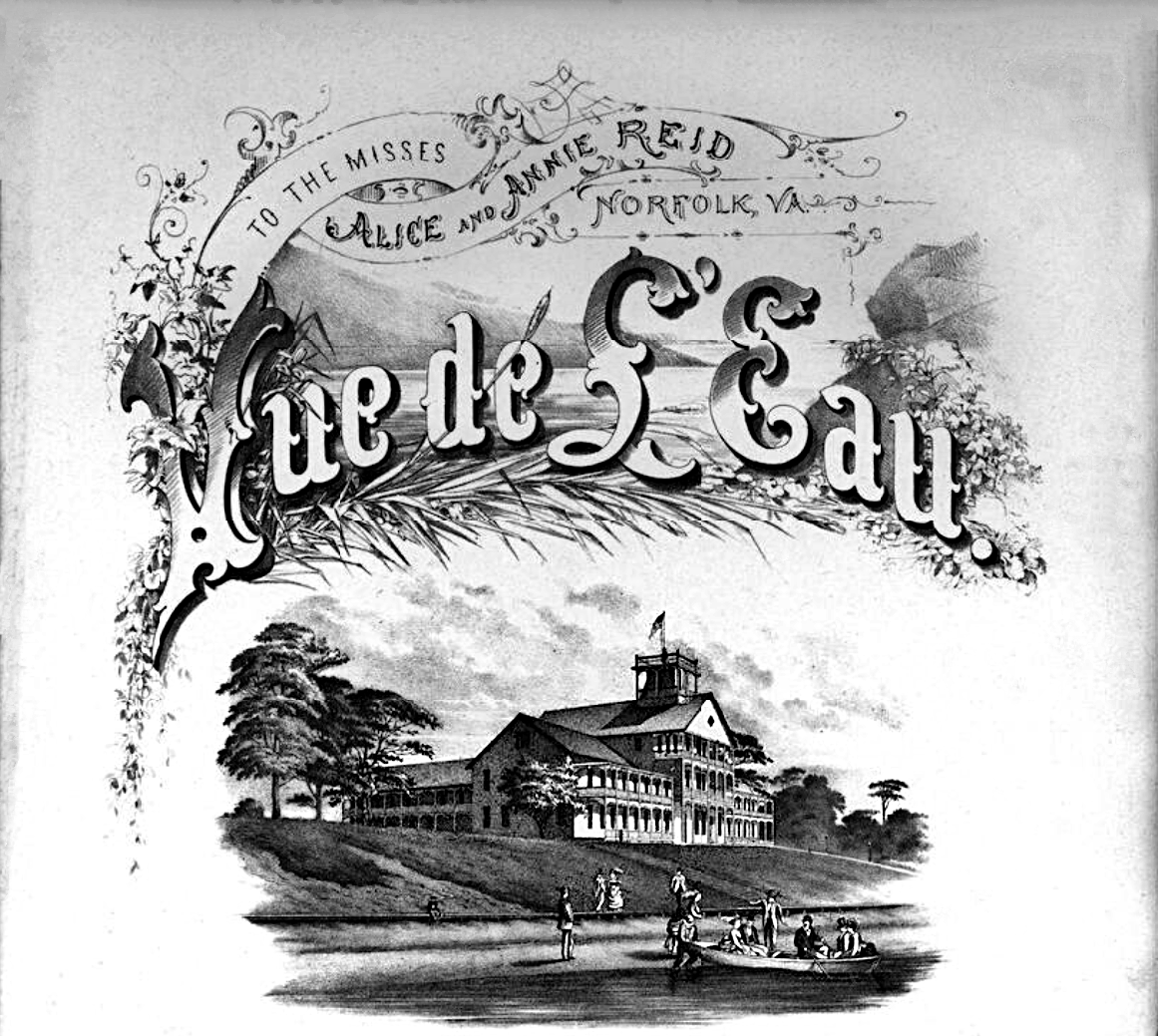 1873 Vue De L’Eau Hotel at Sewell’s Point
1873 Vue De L’Eau Hotel at Sewell’s PointMarshall Jr. became involved in a new
resort project called the “Vue De L’Eau Hotel at Sewell’s Point {Vue De
L’Eau means ‘View of the water’ in French}. No doubt his deep experience in
hospitality played a role in his participation in this new venture located
where today there is the largest naval base in the world!
A description of the hotel is stated in an opening announcement in the Norfolk Virginian dated May 29, 1872 as a first class watering place by the seaside. Besides the hotel, there was a restaurant, billiard saloons, ten pin bowling alleys, and bath houses. There were also facilities for large picnic parties for use by local schools and organizations available.
In response to the building of this new
hotel, the Norfolk and Sewell’s Point Railroad was incorporated in the Virginia
General Assembly according to the Richmond Dispatch dated February 10, 1872 and
Marshall Jr. was listed as one of the key incorporators. Though the railroad is
ultimately never built to support this facility Sewell’s Point it is a prelude
to the concept and implementation of similar facility later at Virginia Beach
as we shall see further into this story. Of course, Virginia Beach asa city or
even a town doesn’t yet exist in this timeframe in1872.
From the book “Meet Marshall Parks,
first edition 1984,” Marshall Jr. also became involved and was responsible for
building the Fairfield Canal in North Carolina. “In 1872, the Fairfield Canal
Company entered into a contract with the Albemarle & Chesapeake Canal
Company (A&C) for the A&C to excavate with their steam dredges a
proposed canal in Hyde County - from the headwaters of the Alligator River to
Lake Mattamuskeet. The purpose of the canal was to drain the surrounding
countryside to improve the land, and for a valuable feeder waterway for
proposed steamboat service. It was completed in 1874 and was 4.5 miles long and
6.5 feet deep.”
The Fairfield Canal is cited in one of the Albemarle & Chesapeake Canal Company's Annual Report from 1872-1880 as "the only other navigable canal {other than the A&C} in North Carolina" at the time. This report also states that the A&C owned 50% of the Fairfield Canal Company's stock, and that A&C owned a small steamboat running to and from Elizabeth City tri-weekly.
Ultimately this canal silted over from
erosion and disuse. Later a new canal was created in it’s place called the
Alligator-Pungo canal and from that a lateral canal led to Lake Mattamuskeet.
This lateral canal was also named the Fairfield Canal. It’s believed that maybe
this portion was only a re-dredging of the earlier Fairfield canal.
Published in the Clarksville, Tn.
Leaf-Chronicle Weekly dated January 13, 1875 is a letter to the editor from
Marshall Jr. titled “THE GREAT CENTRAL WATER LINE, WHAT IT CAN DO FOR THE SOUTH
AND WEST, The feasibility of the Project Demonstrated, An account of the Great
Inland Water Line of the Atlantic Coast, Letter from Marshall Parks, Esq.,
President of the Albemarle and Chesapeake Canal Company,“
“Norfolk, Va. My attention has been
called to the article in your valuable journal respecting the Central Water
Line {the Central Water Line was an informal name given for the building of
the James River and Katawha Canal between the western counties of Virginia and
the coast with the ultimate goal of connecting Hampton Roads, Va. with the Ohio
River, but was only partially built. This canal project began in 1785 with the
encouragement of George Washington under it’s original name the James River
Company. It was an expensive project which failed several times financially and
was frequently damaged by floods including a devastating one in 1877.
Ultimately its towpath became the roadbed right of way for the Richmond and
Allegheny Railroad (R&A). The R&A later became part of the Chesapeake
and Ohio Railway in the 1890s, which developed much of the former canal route
into an important line for West Virginia bituminous coal headed eastbound for
the Peninsula Extension to reach the Hampton Roads coal piers at Newport News.},
and especially to the very flattering manner in which you have complimented my
feeble efforts in opening up a portion of the inland route {canals Marshall
Jr. was involved in are an original founding part of what is today referred to
as the Intracoastal Waterway (ICW), a now fully completed 3,000-mile inland
waterway along the Atlantic and Gulf of Mexico coasts of the United States,
running from Massachusetts southward along the Atlantic Seaboard and around the
southern tip of Florida, then following the Gulf Coast to Brownsville, Texas.
This includes sections of the waterway that consist of natural inlets,
saltwater rivers, bays, and sounds, while others are artificial canals. It
provides a navigable route along its length without the hazards of travel on
the open sea} along the Atlantic coast. While the latter {Marshall Jr’s
projects} is of great public utility, it does not confer a tithe {a
tenth percentage, or 10%, term was originally used as a proportionate measure
of one’s income devoted to one’s church to pay for upkeep and the clergy}
of the important benefits that would accrue to the country from the Central
Water Line proposed to be opened from the Ohio to the Atlantic.”
“From New York, southward, we have the Great Atlantic {Ocean} open at all times for navigation. In addition, we have also an inland water line, made by uniting the several rivers which lie in the proper course, by means of short canals from one natural water-way to the other. By this means a steamer of 500 tons or less can go from New York to Philadelphia, Baltimore, and Norfolk to Beaufort N. C., without encountering the ocean navigation; and if Congress will lend its aid to efforts now being made, the same, vessels may go to the St. John’s river in Florida. In fact, we have now, with a slight interruption, a continuous inland channel. The important fact is not generally known. Yesterday a small U. S. schooner, engaged on the coast survey arrived at this port {Norfolk, Va.} from New York having come by the outside route. The officer in charge stated the perils he had encountered by reasons of the rough weather on the coast. He was asked why he did not come by the inland route and was quite surprised when he was informed that he had exposed himself to the dangers of the ocean unnecessarily, as his vessel could have come by the canal route from New York. He had learned there was a canal to North Carolina, and availed himself of the safe transit by the Albemarle & Chesapeake Canal. He saw here for the first time a chart of the route and learned that vessels of four times the tonnage of his can and do navigate that route.”
“Only a few weeks ago {a man} in a paper boat came from Canada to New York via the Erie canal to this port, and had continued his journey thence to the St. John’s river, Florida, and thence to Cuba, in his little bark alone.” Marshall Jr. then goes on to relay more specific details of the inland route down the Atlantic coast from New York to the St. John’s river in Florida.
His letter then continues “Steamboats of less than 500 tons may take this route, provided they are not wider than 24 feet, and do not draw more than seven feet of water.”
“I have been thus particular in describing the route, because I wanted to show what great benefits have been secured by the construction of only three short canals, having an aggregate length of only seventy miles!”
“Why not the Great West avail itself of
the many natural water ways which lie in the way of the great line of commerce
and reach the East by improving the natural rivers by short canals? Is there
anything in the way of accomplishing so desirable an object, except the cost,
which is paltry compared with the great benefit it would bestow on the whole
country?”
This concludes “Birth of Virginia Beach Part 9” the next installment, Part 10,
will be published in May, 2024.
Thank you for reading our newsletter, Making Tracks, and for your interest in the development of the historical Model Railroad Museum to be established here in Hampton Roads in the near future. Please consider a donation or sponsorship of this future attraction to help us acquire a proper location.
Get Updates and Special Offers in
the MRMHR Newsletter:
Making Tracks
Sign Up Here...
The official newsletter for the Model Railroad Museum of Hampton Roads

Share this site on your favorite Social Media page!
Recent Articles
-
Making-Tracks-December-2025
Dec 14, 25 06:23 AM
The official newsletter for the Model Railroad Museum of Hampton Roads -
Making-Tracks-November-2025
Dec 12, 25 12:15 PM
The official newsletter of the Model Railroad Museum of Hampton Roads -
A STEM Educational Center
Nov 09, 25 07:20 PM
Being a STEM Educational Center is a major part of our mission.
The Birth of Virginia Beach
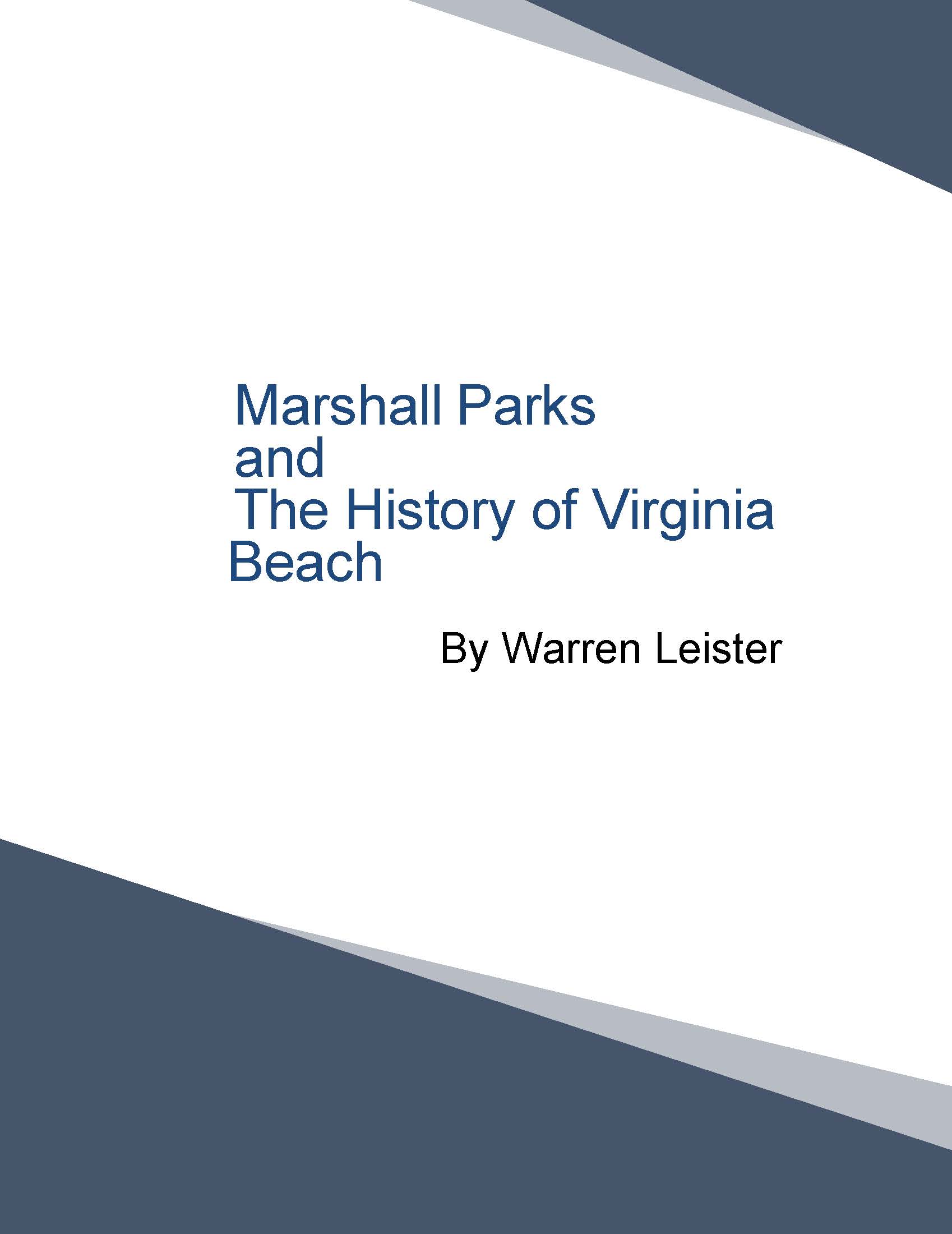
We have created and published a new historical document on the Birth of Virginia Beach. This has been written by our historian Warren Leister after researching the era and the people involved for several years. Excepts have been published here in our newsletter previously, but the information is now available all together in a 99 page document that you can purchase in our store. It factually explores the events, the dedicated people and the interesting culture in which they lived. Pick up your copy today!
The Model Railroad Museum of Hampton Roads is a fantastic community center based on running, operating and even building your own model railroads! There's something for every age here.
Learn about the real history of this area and how important it was in the building of America. Watch how railroads were built, the people involved, where America's roots were formed.
As they build their own railroads, students will be learning about science, electronics, architecture, technology, engineering, mathematics, and the art of 3 dimensional model landscaping. They can earn rewards for completing projects and winning contests.
Try to solve yardmaster problems on a switching layout like getting the lumber from the forest to the furniture store, by way of the saw mill and the lumber yard.
Run your train around blockades and other trains to get to the station on time without speeding or crashing.
Play railroad monopoly using model railroads. Winner is the one who can collect the most cars into his yard within an hour.
There will be programs for autistic and special needs kids, disabled adults and veterans.
School tours. Holiday Shows. Library and video rooms. Even youngsters will have their own wooden models to enjoy. There are classes and hands-on clinics for adults. Learn how to get started in the hobby. Or just enjoy the fun.
Everybody loves trains and this will prove it! Just click on the either the blue DONATE button below to make it happen...
PayPal Giving Fund:
No Credit Card Fees
OR...
Charitable Donations through PayPal, Credit or Debit cards:
(Opt in or out of paying credit card fees)
Get Updates and Special Offers in
the MRMHR Newsletter:
Making Tracks
Sign Up Here...
The official newsletter for the Model Railroad Museum of Hampton Roads

